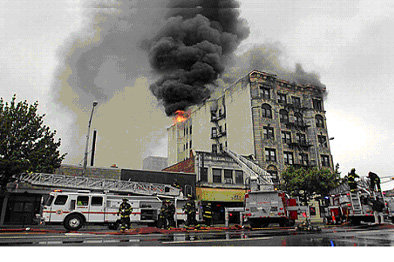Fatal Fires in Residential Buildings in the USA, 2006 -2008
The U.S. fire death rate has gone down dramatically over the past three decades since the creation of the U.S. Fire Administration (USFA), from over 30 deaths to 11 deaths per million population. The United States, however, continues to have one of the highest fire death rates per capita among Western Nations. The original goal for USFA was to help lead a reduction in fire deaths by 50 percent in a generation. With annual fire deaths dropping from over 9,000 to less than 3,500 in that period of time, USFA's goal has been achieved. Nevertheless, fire deaths are still high.
Around 80 % of all fires take place in residential buildings; they include one- and two-family dwellings (including manufactured homes), apartments, hotels, motels, college dormitories, boarding houses, etc. Approximately 1,800 fatal residential building fires occurred annually in recent years (2006 to 2008). These fires resulted in an annual average of approximately 2,635 deaths, 725 injuries, and $196 million in property loss. Fatal residential building fires tend to be larger, cause more damage, and have higher injury rates than nonfatal fires. Smoking is the leading cause of fatal residential building fires (19 %). The leading areas of fire origin in fatal residential building fires are bedrooms (27 %) and common areas such as living and family rooms (23 %). These fires are more prevalent in the cooler months, peaking in January (13 %). They occur most frequently in the late evening and early morning hours, peaking from midnight to 5 a.m; one-third (33 %) taking place during these 5 hours.
As already said, smoking has been the leading cause of home fire deaths for decades. Seventy percent of the home smoking material fire fatalities resulted from fires originating with a) upholstered furniture, or b) mattresses or bedding. Flammability standards and decreases in smoking have helped reduce these deaths, but the "fire-safe (self-extinguishing)" cigarette will help prevent many more. In the meantime, Canada and all 50 states in the U.S. have passed legislation requiring cigarettes to be "fire-safe."
More: nfpa.org/categoryList.asp?categoryID=953&URL=Research/Fire statistics/The U.S. fire problem
